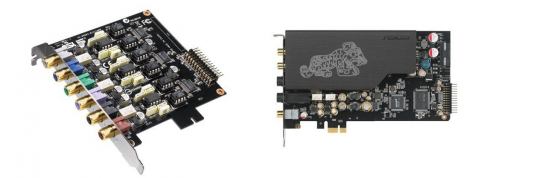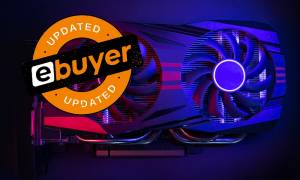 If you’re looking at improving the audio experience of your computer, then you’re likely looking down the route of a sound card- Ideal for gamers, home theaters, editors and audiophiles this guide will give you some introductory information for buying a sound card. So, lets start with the basics.
If you’re looking at improving the audio experience of your computer, then you’re likely looking down the route of a sound card- Ideal for gamers, home theaters, editors and audiophiles this guide will give you some introductory information for buying a sound card. So, lets start with the basics.
So, let’s start with the basics.
A sound card will take audio from a computer and convert it into a format that can be played back on speakers or headphones, depending on what’s connected. They come in a variety of types, ranging from integrated motherboard solutions, PCI/PCI-E expansion cards, to external units that can be used on the go. Some headsets even come with their own sound cards built in, so that they can support additional features such as virtual surround sound.
Integrated vs. Dedicated; Why bother?
If the motherboard already comes with an integrated sound card, why bother with a discrete one?
There’s numerous reasons to consider a sound card, but most notable is the quality of the output that can be received from hardware dedicated to the purpose. Integrated sound cards tend to be perceptible to interference from other components on the motherboard, leading to pops, crackles and buzzing from the speakers, which becomes more noticeable at louder volumes or when wearing headphones. A dedicated card will also be much better at converting a digital signal to analog resulting in a much clearer representation of the audio being played. This conversion is handled by a DAC (digital-to-analog convertor) which will also lead to an increase in audible quality, since the DAC used on a standalone card will be able to convert digital signals more accurately into an analog format.
What to look for in a dedicated card?
This largely depends on what the primary purpose of the card will be. Is it for gaming? Will it be used in a home theatre PC? What about more specialised uses such as DJing or producing music?
For gaming…
Video game developers can make great use of audio in a three-dimensional space in games to help sell the immersion factor of the virtual world they’ve created. Most sound cards will support surround sound, with 5.1 (five speakers and a subwoofer) or 7.1 (seven speakers and a subwoofer) being the most common. In this respect, just about any standalone sound card should offer a decent upgrade. However, for the best gains in both audio and performance, look for a sound card with an onboard audio processor. This will offload work from the CPU allowing it to dedicate that processing power to the game instead leading to a much smoother experience. This onboard processor will usually carry additional benefits for gamers, such as background noise cancellation from a microphone, leading to clearer commands to teammates in the heat of battle.
For home theatre…
For those looking for a more authentic theatre experience at home, then the requirements for a sound card become a little more technical. For starters, finding a card that has an SNR (signal-to-noise ratio) of at least 116dB ensures that any interfering noise or static is kept to an absolute minimum which could ruin dynamics, especially during quiet scenes. If the media PC is capable of Blu-ray playback, then look for a card that supports the full level of copy protection required by the Blu-ray specification, otherwise audio will be downsampled to the same levels you’d get from a standard DVD and therefore dulling the experience that Blu-ray brings with it.
For listening to music…
Audiophiles should be looking for the card that offers the best SNR affordable within the budget. Ensuring a high SNR means that in songs with a lot of changes in dynamics, such as classical music, the listening experience will be of a consistent high quality and there should be very little in the way of interfering noise. If the plan is to use this card with a set of audiophile headphones then keep an eye out for whether it has a headphone amp built in. Some headphones will require this additional amp to be able to drive the speakers in the best possible manner.
For producing music…
When it comes to music production, the aspects to look out for will be the connectivity of instruments and microphones. Most production level sound cards will come with a breakout box, or a 5.25” expansion bay that will open up regularly used ports to the front of the computer, allowing for quick and easy connection for recording. Sound cards built into mixing desks are becoming more common now, so that you can have a decent all in one solution without having to worry about the interoperability of two separate devices.
For DJing…
A more niche aspect to choosing a sound card, but there’s still some important aspects to look out for. To pair with an analog mixer, then look for a card that has multiple outputs – one for each channel that’s needed. Be warned, some of these boxes are limited to only working with their intended software, so double check before purchasing. Increasingly more common, however, is the inclusion of a sound card within a control surface. These all-in-one solutions offer great compatibility with one another, since the manufacturer of the device is aware of what hardware they have to work with.
This information should serve as an introductory guide to the larger key points which are relevant to how the card is to be used. There are other features that will factor into the choice of sound card, but they tend to be more superficial in scope. Set a budget, find the required features, then take the tertiary options into account. That should narrow down the selection, making it much easier to choose.
This article was a guest post written by Steven Dawson from GameGrin
For more information and to view the range, click here for Sound Cards at Ebuyer.com





























